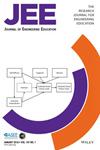How did the landscape of student belonging shift during COVID-19?
Abstract
Background
Belonging is a fundamental human motivation associated with a wide range of positive psychological, educational, social, and job outcomes. Frequent and predominantly conflict-free interactions within a stable, relational framework of caring are required to facilitate belonging.
Purpose
The goal of this study was to understand if and how emergency remote teaching (ERT) used during the COVID-19 pandemic changed the ways in which instructional support and interactions were linked to belonging among engineering students.
Methodology/Approach
This study used survey data from a cross-sectional dataset at a single large institution comprised of sophomore to senior-level students (n = 1485) enrolled in engineering courses between 2016 and 2021. Hierarchical linear modeling (HLM) was used to study relationships among instructional support, instructor interactions, and belonging.
Findings/Conclusions
HLM models of ERT and traditional learning differed dramatically. In traditional classroom learning, race, interactions with faculty and teaching assistants (TAs), and instructional support were important factors in belonging. In ERT, certain motivations to study engineering (altruism, desire to build things) had nuanced associations with belonging, while race and interactions with faculty and TAs became largely irrelevant. Most concerning, faculty interactions in traditional learning were negatively associated with belonging.
Implications
Rather than returning to pre-pandemic traditional learning, a hybrid model that offers a more level playing field for marginalized students to find belonging in the classroom is recommended. In developing such models, faculty must take special care to avoid having a potentially negative impact on student belonging.

 求助内容:
求助内容: 应助结果提醒方式:
应助结果提醒方式:


